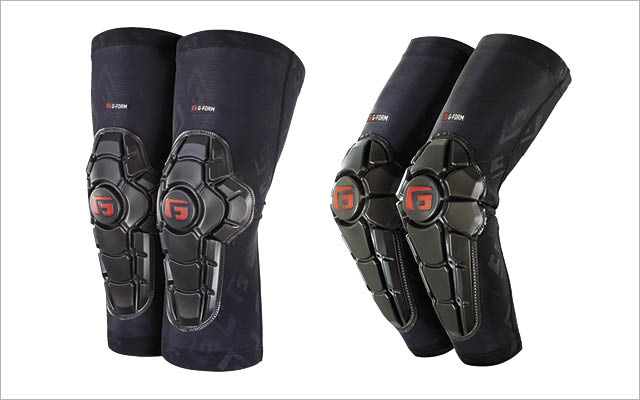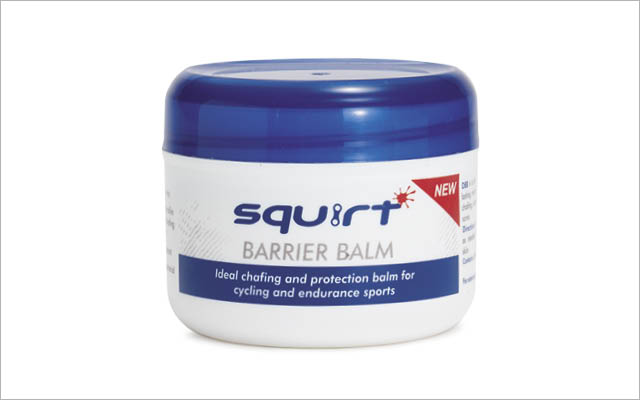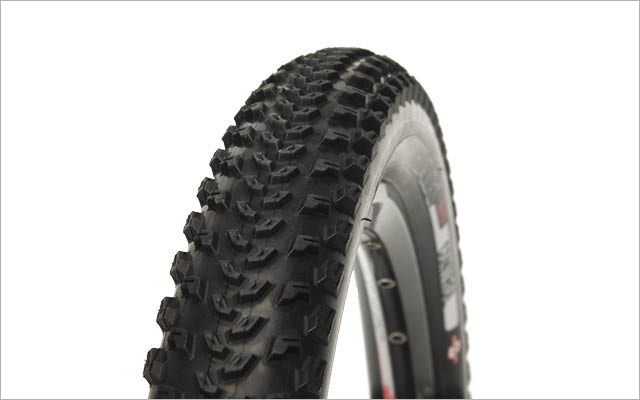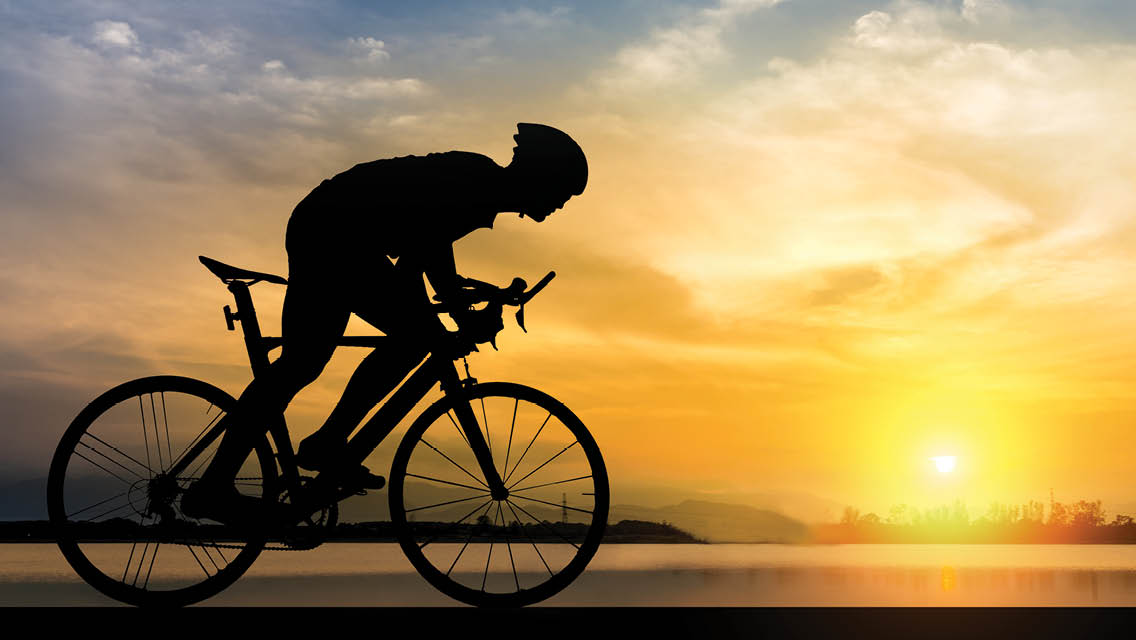There are two tracks you can take to improve your mountain-biking abilities: You can either white-knuckle it, or you can use your head.
“Learning in the school of crashes and hard knocks is the tough way to go,” says USA Cycling–certified coach Lynda Wallenfels, a past 24-hour solo national champion and the founder of LW Coaching in St. George, Utah. “Focusing on building your skills and fitness is worth it to fast-track your riding.”
Simply hopping on your two-wheeler and logging as much saddle time as possible will get you partway to where you’re going. But to truly up your game without needing too many Band-Aids, it’s important to hone your skills, build strength and mobility, and expand cardio fitness — especially your anaerobic fitness, advises Trapper Steinle, a USA Cycling–certified coach at Life Time in Centennial, Colo.
Road biking and off-road biking require similar fitness, but with some key differences. Mountain biking, or MTB, is more anaerobic in nature, explains pro racer Emily Schaldach of Boulder, Colo. “It’s all about varying terrain: Sometimes we’re on long, steady climbs; other times we’re faced with rolling hills that require punchy power. This means doing intervals that last as long as 20 minutes or as short as 10 seconds.”
All of our experts stress core strength as essential to success. And if you creatively combine exercises, cross-training can prep you for the most tortuous singletrack, says Steinle.
“MTB involves more upper-body strength and stability because you’re typically out of the saddle a lot, having to absorb shock with your upper body — versus on a road bike, where you get into the drops, tuck, and go.”
Ultimately, astute training will increase your enjoyment of the sport as well. “Mountain biking tests my capacity and capabilities, and I think that’s the most rewarding part of it,” Steinle says. “Pushing through my perceived limitations to come out stronger on the other side has been catalytic for me in my growth as an athlete. You get to explore nature — and explore the limits of what you’re capable of.”
Mountain Biking Technique Tips & Drills
Core Strengthening
“You can’t fire a cannon from a canoe, and if you don’t have a strong base, you’re never going to be able to create maximal force through your extremities,” explains Steinle. He recommends these off-bike exercises to boost your core — and in the process, your power.
- Perform functional movements, including squats, deadlifts, pushups, rows or pull-ups, cleans, jerks, and snatches, as well as glute bridges and hip thrusts, to build strength in the lower back, spinal erectors, and glutes.
- Concentrate on your body’s sling systems to intensify the rotational strength you’ll need on the bike with isometric and dynamic core strengthening, including planks, side planks, resistance-band rotations, and Russian twists. (For more on sling-system exercises, see “Power Up Your Sling-System.”)
- Don’t forget your legs! Beyond power, mobility is key when riding, particularly in the hips and ankles so you don’t develop anterior-chain tightness, where hip flexors get taut, shorten, and cause lower-back issues. Steinle prescribes hip stretches along with lunges, step-ups, and single-leg deadlifts.
Cross-Training Tune-Up
Creative cross-training can take you far, Steinle says: “Think of a race where you climb to the top of a long hill; you’re cooked, but now you’ve got to negotiate a technical descent with a tired body, still buffering lactate in the muscles, still trying to catch your breath, and there’s no pause.”
To mimic this, he pairs resistance exercises with balance tests. “Try leg exercises like lunges or squats to get your body and mind into a fatigued state, then jump into a balance exercise for proprioceptive work — something as simple as standing on one leg while balancing on a Bosu ball with your eyes closed.”
Schaldach adds box jumps: “I focus on exercises that put my body in a cycling position: For example, landing on top of a box in a squat position that mimics a bike position.”
Drill 1: Cat Power
The foundational pose on a mountain bike is the “ready position”: everything’s bent — knees, hips, and elbows — your weight is in your feet, chest is low, butt is off the saddle, and your head is up, with eyes trained on the trail. “You want to be relaxed on the bike so you’re not stiff, but still strong,” explains Wallenfels. “This is your neutral go-to position, providing stability and bike control.”
Practice dropping quickly and naturally into your ready position. Sounds simple, but the goal is to build muscle memory until it becomes second nature.
“Be a cat!” advises Schaldach. “As soon as the trail becomes more technical, stand up in the position a cat would be in before it pounces.”
Drill 2: Metcon Supersets
Ready yourself for the ups and downs with high-intensity anaerobic metcon, or metabolic conditioning. Steinle endorses 20-minute AMRAP (as many reps as possible) sessions in a circuit of four exercises.
He favors compound movements — think dumbbell cleans and jerks, rowing-machine sprints, and especially stair climbing — either using a machine or running actual flights. “Stairs demand hip flexion and are great for prolonged engagement of the muscles in the lower leg because they’re constantly under tension.”
Drill 3: Cardio Intervals
All competitive cycling requires cardio fitness, and Steinle does Wingate-type intervals, which involve increasingly difficult work-to-rest ratios. Riding indoors or out, go all out for 15 seconds, then take 45 seconds off for intense recovery; 20 seconds on, 40 seconds off; 30 on, 30 off. Then do it all over again.
R & R
After a tough training session, rest and recovery are not optional, says Schaldach. “Riding makes you fit; resting makes you fast.”|
Mountain Biking Gear Essentials

G-Form Pro-X2 Elbow and Knee Pads
“Safety’s No. 1,” says Wallenfels. When you’re learning skills or navigating challenging trails, elbow and knee pads will keep you whole. $50–$60 at www.g-form.com.
Squirt Barrier Balm Chamois Cream
Cycling is tough on the body, so why suffer when you don’t have to? Schaldach advises all riders — whether on a short jaunt or an endurance race — to rub on chamois cream to prevent chafing. You’ll be glad you did. About $20 from numerous retailers.
Specialized Fast Trak Control 2Bliss Ready Tubeless Tires
Steinle recommends tubeless on the trail. “The Fast Trak is probably the best all-around tire for technical riding, but it’s still fast rolling and stable in corners.” $40 at www.specialized.com.
WEBEXTRA
Keeping the Joy Rolling During Mountain-Bike Intervals
Pro MTB racer Emily Schaldach offers hard-won tips for having fun while doing tough training.
When I started mountain-bike (MTB) racing, I was still spending most of my time running around in the woods, making up games, and feeling generally enthralled with the world around me. In middle school, I truly hadn’t hit the teenage-angst phase or feeling that I wanted to be more “adult.” I loved to play, to get really covered in dirt, to make up songs, and to climb trees.
It became hard to remember this genuine type of fun when my planner filled up and studying and cleaning the kitchen became a priority. However, riding mountain bikes continued to hold this joyful space for me. Even as I started to feel more independent and responsible for my own well-being, I let cycling be a few hours of each day when I let my to-do list flutter away and I simply focus on how splendid it feels to be pedaling along and ripping up some berms with a great friend on my wheel.
As a professional cyclist, I have felt myself slip into times when biking is not fun and workouts feel like something I have to do rather than something I want to do. Cycling can seem extremely serious; however, at the end of the day, it really is all for fun and games.
As soon as I don’t want to ride, or as soon as biking is not fun, it’s time for me to step back and consider why I was excited about this sport in the first place. For me, I love to compete, and even more important, I love riding next to friends, laughing and feeling giddy to make it over the next hill. I love squealing after a sweet corner and feeling stoked after nailing a tricky switchback.
From a results perspective, there are very few people who are the Best Cyclists in the World. Personally, I would rather be full of joy and love each day I have the opportunity to ride or race than leave behind all the fun and make something that is rooted in excitement just another to-do-list item.
EMILY SCHALDACH is based in Boulder, Colo., and races mountain bikes and cyclocross for the BitchnGrit Race Team. Find more about her training and racing at emilyschaldach.weebly.com.
This originally appeared as “Ready to Ride” in the September 2019 print issue of Experience Life.






This Post Has One Comment
I finally found a really great article, this is really cool